Tuesday, June 10, 2008
No. 152 - Faith Bible Church
Faith Bible Church
1917
18531 Gresham Street, Northridge – map
Declared: 4/7/76
Next up on the list of Los Angeles Landmarks is Faith Bible Church, the first church in Northridge. However, when it was built in 1917, it wasn’t called Faith Bible Church, and Northridge wasn’t called Northridge.
In 1910, Francis Marion “Bud” Wright and Henry Hubbard turned over their 1,100-acre Hawk Ranch to the Valley Farms Company for subdivision. (Messrs Wright and Hubbard had bought the land from Benjamin Porter in 1887; Porter had become a part owner of the land with Senators Charles Maclay and George K. Porter, his cousin; Maclay and G.K. Porter had purchased the land from heirs of Eugolio de Celis, a Spaniard who had bought the “Rancho Ex-Mission de San Fernando” from the Mexican government for $14,000 back in 1846. Got all that?)
Just before the subdividing began, though, Wright’s wife, Emily Vose Wright, named the development “Zelzah”, “watering place in the desert”, a biblical oasis. Just a few years earlier, what would be Zelzah had become the only Valley stopping point on the Southern Pacific Railroad line on this side of the newly blown out Chatsworth Tunnel. In May 1915, residents voted to annex a chunk of the Valley – including Zelzah – to the city of Los Angeles.
Six families of Norwegian ancestry got together in 1917 to build Zelzah’s first church, the Zelzah Norsk Evangelisk Luther’s Kirke, or the Norwegian Lutheran Church. The white, clapboard building in the Gothic Revival style sits about a block off the main drag of Reseda Boulevard. The church itself hasn’t changed very much since whenever this picture was taken:
On July 1, 1929, Zelzah’s citizens renamed their community “North Los Angeles”. Nine years later, on November 1, 1938, the name changed again, this time, based on a suggestion from Carl S. Dentzel (who would go on to be director of the Southwest Museum and, significantly, was the primary author of the 1962 ordinance which founded the L.A. Cultural Heritage Board), to the Northridge we know today.
From the Oviatt Library Digital Collections, here’s a program of service from December 11, 1938, when the building was home to the First Lutheran Church of Northridge, Pastor O. Qualen presiding. It must’ve still been thick with Norwegians; church officers included the names Hegland, Amundson, and Ullensvang.
In 1976, the Cultural Heritage Board, on which Dentzel was still a member (he remained on the Board until 1980), and the city of L.A. designated the church – then Faith Bible Church – HCM No. 152, Northridge's first Landmark (it didn't get its second, No. 484, until 1990).
Visiting the Monument today, you’d expect the church was on the verge of becoming yet another area auto shop (there are a bunch close by). But look at all the many organizations which claim an address of 18531 Gresham: Antioch Church; Northridge Free Methodist Church; Sae Soon Church; The Korean Senior Citizen Association of San Fernando Valley; Eine Kleine Musik Klasse; and Soo Kyung Choi Violin Academy.
Thanks to the reverend who welcomed me to take the interior pictures here.
Source:
“The Romantic History of Northridge, 1769-1975” San Fernando and Que Magazine San Fernando Valley Pub. Co. September 1975 Vol. 19 No. 1 Sherman Oaks, CA
Up next: (Site of) Lincoln Park Carousel
Posted by
Floyd B. Bariscale
at
10:46 PM
![]()
Labels: Northridge
Subscribe to:
Post Comments (Atom)
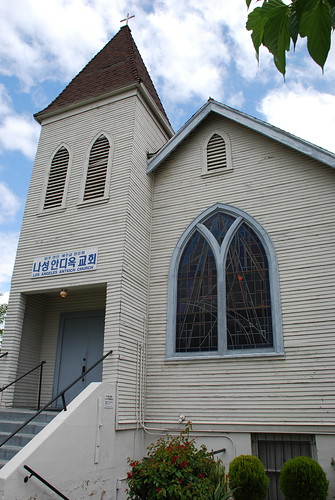
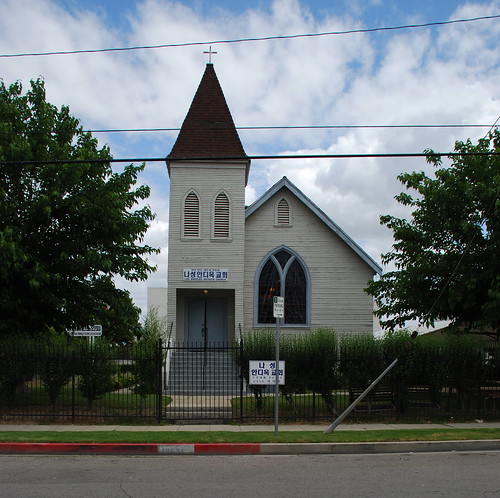
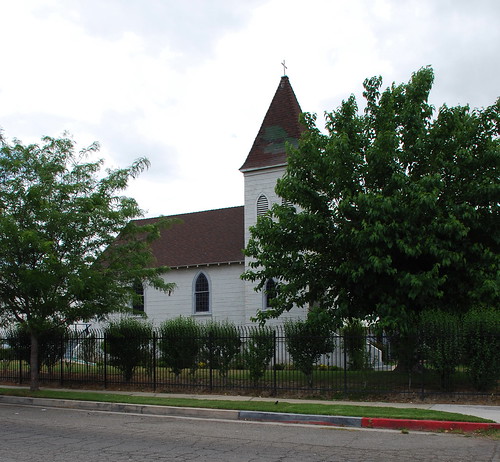
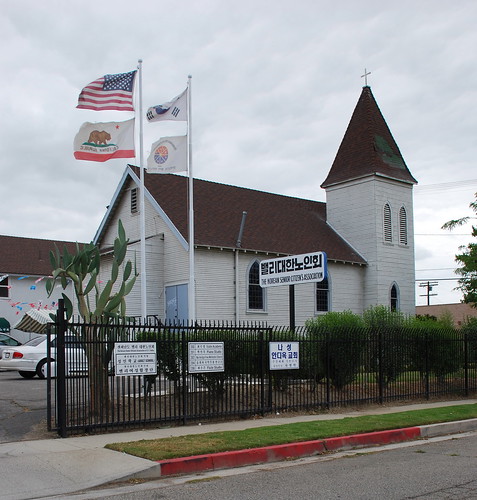
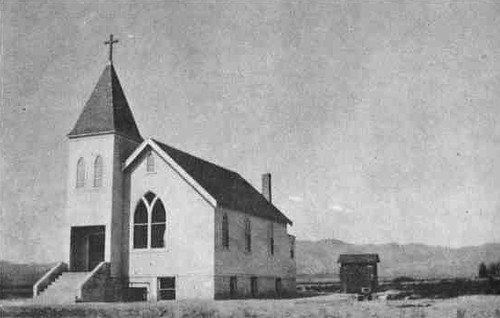


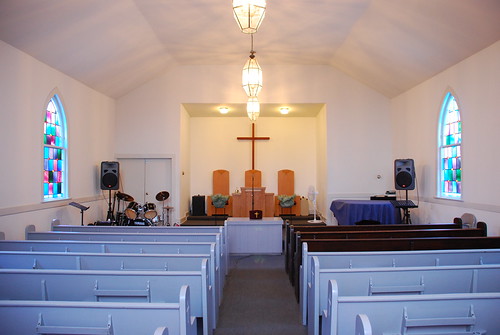

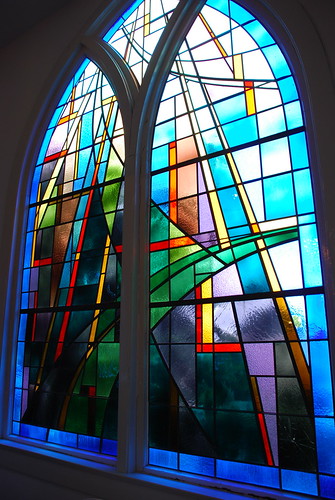
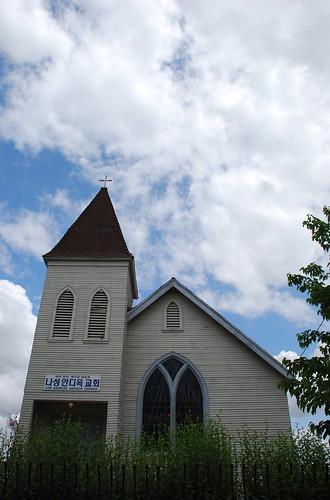

3 comments:
This paragraph:
"Just before the subdividing began, though, Wright’s wife, Emily Vose Wright, named the development “Zelzah”, “watering place in the desert”, a biblical oasis. Just a few years earlier, what would be Zelzah had become the only Valley stopping point on the Southern Pacific Railroad line on this side of the newly blown out Chatsworth Tunnel. In May 1915, residents voted to annex a chunk of the Valley – including Zelzah – to the city of Los Angeles."
Caused me to think of the Los Angeles Water Wars - and how ironic that Emily Wright's naming was as a "watering place in the desert!" That vote to annex a chunk of the north valley to the city of L.A. benefitted from the Owens Valley Water Aqueduct, yes?
It's all connected... :)
What's more, Honeywoney, is Hubbard went on to become a member of L.A.'s Aqueduct Board in 1914, doing his best to help promote the Valley's annexing to the city. Most of the Valley did the following year. Of course, getting that Owens River water was the big selling point with Valley voters.
No way! Soooo interesting. Love this stuff. :)
Post a Comment